Discover 11 hidden attractions, cool sights, and unusual things to do in Moscow (United States). Don't miss out on these must-see attractions: University of Idaho Arboretum and Botanical Garden, Ridenbaugh Hall, and Kappa Sigma Fraternity. Also, be sure to include Moscow City Hall in your itinerary.
Below, you can find the list of the most amazing places you should visit in Moscow (Idaho).
Table of Contents
University of Idaho Arboretum and Botanical Garden

Arboretum in Moscow, Idaho. The University of Idaho Arboretum and Botanical Garden is a major arboretum and botanical garden in the northwestern United States, on the campus of the University of Idaho in Moscow, Idaho. Located within a valley south of the President's Residence on Nez Perce Drive and adjacent to the UI Golf Course, its 63 acres are open to the public daily without charge.[1]
Ridenbaugh Hall
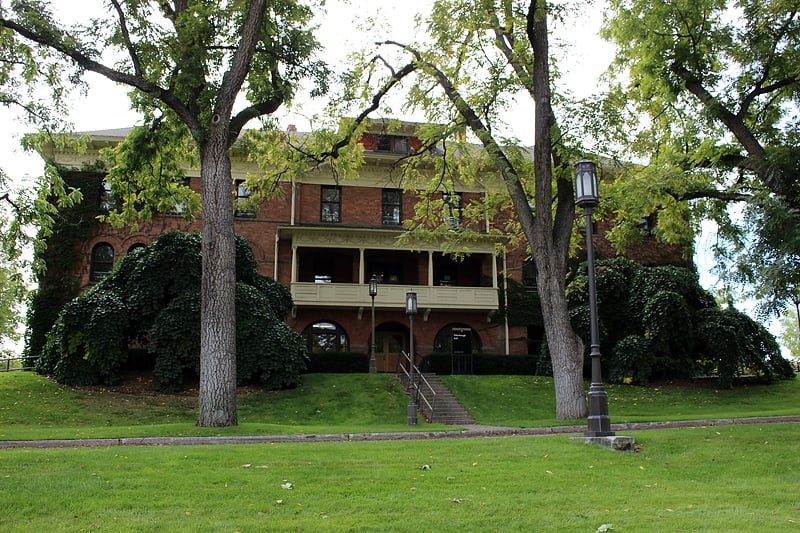
Ridenbaugh Hall is a historic three-story building on the campus of the University of Idaho in Moscow, Idaho. It was built as a dormitory for female students in 1902. By the 1970s, it was the oldest brick building still standing on campus.
The building was designed by architect Willis Ritchie in the Renaissance Revival style. It has been listed on the National Register of Historic Places since September 14, 1977.[2]
Address: 601 Campus Drive, Moscow
Kappa Sigma Fraternity
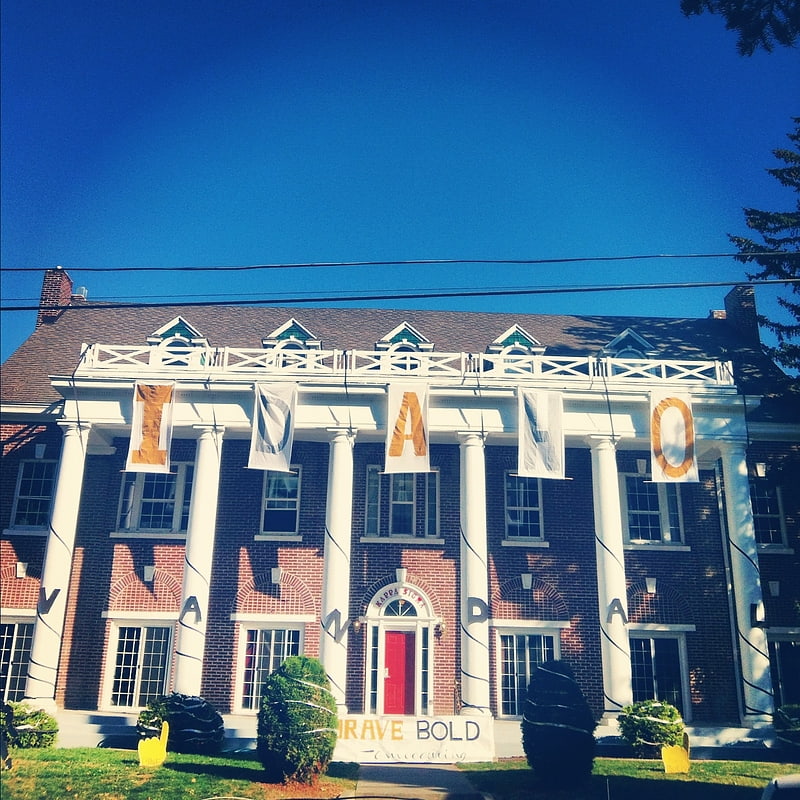
Historical place in Moscow, Idaho. The Kappa Sigma Fraternity, Gamma Theta Chapter is a historic fraternity house in Moscow, Idaho. It was built in 1916 for the Kappa Sigma chapter at the University of Idaho. It was the first Kappa Sigma chapter established in the state of Idaho.
The house was designed in the Classical Revival architectural style. It has been listed on the National Register of Historic Places since September 3, 1996.[3]
Address: 503 University Avenue, Moscow
Moscow City Hall
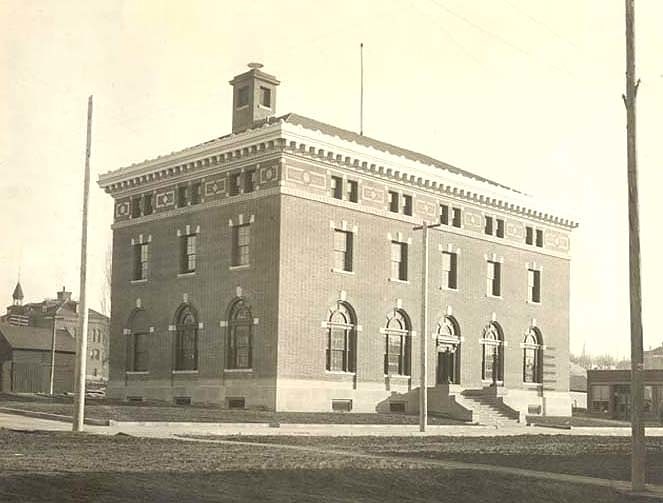
Courthouse. The City Hall of Moscow, Idaho, formerly known as the Moscow Post Office and Courthouse and Moscow Federal Building, was built 111 years ago in 1911. Its red brick with ivory terracotta trim reflects Late Victorian and Eclectic architecture.
As a federal building, it served historically as a post office and a courthouse of the U.S. District Court for the District of Idaho. Listed on the National Register of Historic Places in 1973, it was vacated in 1974 when the new federal building opened two blocks south. Two years later, it was acquired by the city from the General Services Administration for $70,000, with half of that funded from the state historical society. At the time, the land alone was valued at $100,000.
Rejected for use as a library in 1979, it became a community center in the early 1980s.
A bond issue to fund a renovation was defeated in late 1986, it became the city hall of the municipality in the 1990s.[4]
Address: 206 East 3rd Street, Moscow
Kenworthy Performing Arts Centre
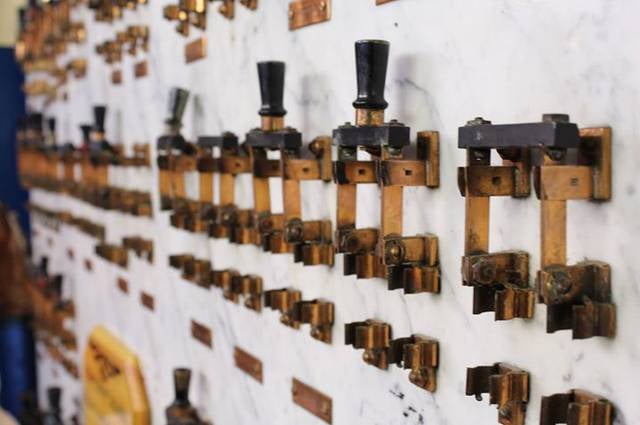
Top attraction, Concerts and shows, Theater
Address: 508 S Main St, 83843-2918 Moscow
University of Idaho
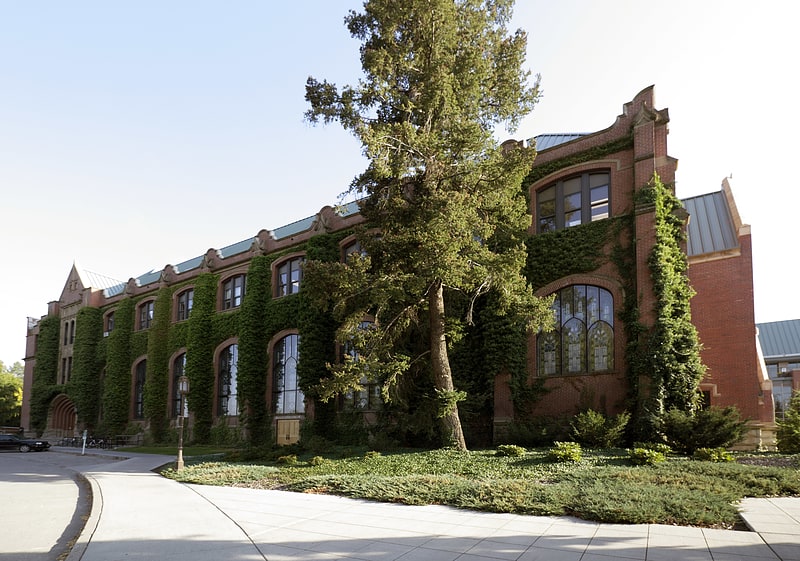
Land-grant university in Moscow, Idaho. The University of Idaho is a public land-grant research university in Moscow, Idaho. It is the state's land-grant and primary research university, and the lead university in the Idaho Space Grant Consortium. The University of Idaho was the state's sole university for 71 years, until 1963, and its College of Law, established in 1909, was first accredited by the American Bar Association in 1925.
Formed by the territorial legislature on January 30, 1889, the university opened its doors in 1892 on October 3, with an initial class of 40 students. The first graduating class in 1896 contained two men and two women. It has an enrollment exceeding 12,000, with over 11,000 on the Moscow campus. The university offers 142 degree programs, from accountancy to wildlife resources, including bachelor's, master's, doctoral, and specialists' degrees. Certificates of completion are offered in 30 areas of study. At 25% and 53%, its 4 and 6 year graduation rates are the highest of any public university in Idaho, and it generates 74 percent of all research money in the state, with research expenditures of $100 million in 2010 alone. It is classified among "R2: Doctoral Universities – High research activity".
As a land-grant university and the primary research university in the state, U of I has the largest campus in the state at 1,585 acres (2.5 sq mi; 6.4 km2), in the rolling hills of the Palouse region at an elevation of 2,600 feet (790 m) above sea level. The school is home to the Idaho Vandals, who compete in NCAA Division I athletics. In addition to the main campus in Moscow, the U of I has branch campuses in Coeur d'Alene, Boise, and Idaho Falls. It also operates a research park in Post Falls and dozens of extension offices statewide.[5]
Address: 875 Perimeter Dr, Moscow
University of Idaho Gymnasium and Armory
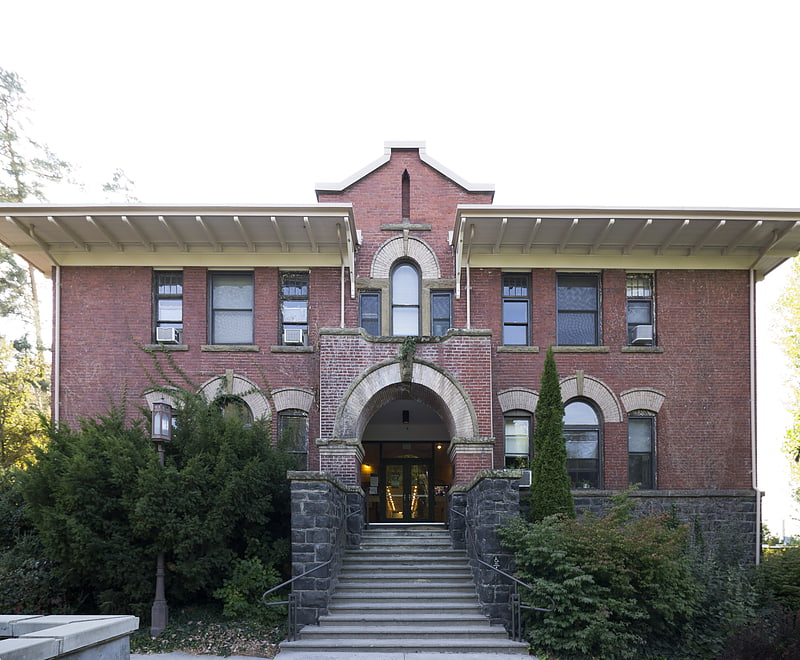
The University of Idaho Gymnasium and Armory is a historic building on the campus of the University of Idaho in Moscow, Idaho. It was built as a gym and armory in 1903. In 1928, the gym was moved to another building, Memorial Gymnasium.
The building was designed by John E. Tourtellotte in the Romanesque Revival architectural style. It has been listed on the National Register of Historic Places since January 3, 1983.[6]
Appaloosa Horse Museum

History museum, Museum
Address: 2720 W Pullman Rd, 83843-4024 Moscow
Skattaboe Block
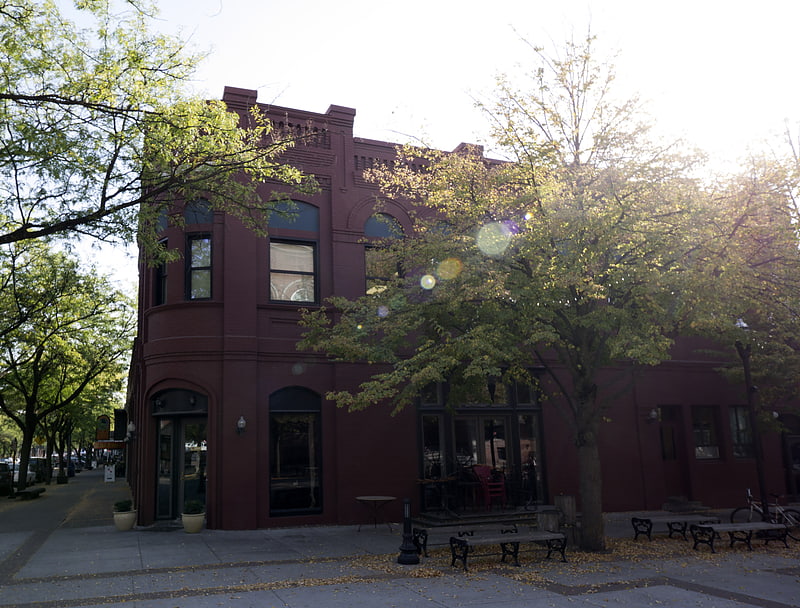
The Skattaboe Block is a historic building in Moscow, Idaho. It was built by Taylor & Lauder for the Moscow Telephone and Telegraph Company in 1892. It was owned by the Inland Telephone Company from 1925 to 1952, when it was purchased by the General Telephone Company. It currently houses New Saint Andrews College.
The building was designed in the Romanesque Revival architectural style. Due to a fire in 1966 the building was renovated in 1978, but the original design of the building has been preserved. It has been listed on the National Register of Historic Places since May 22, 1978.[7]
McConnell–McGuire Building
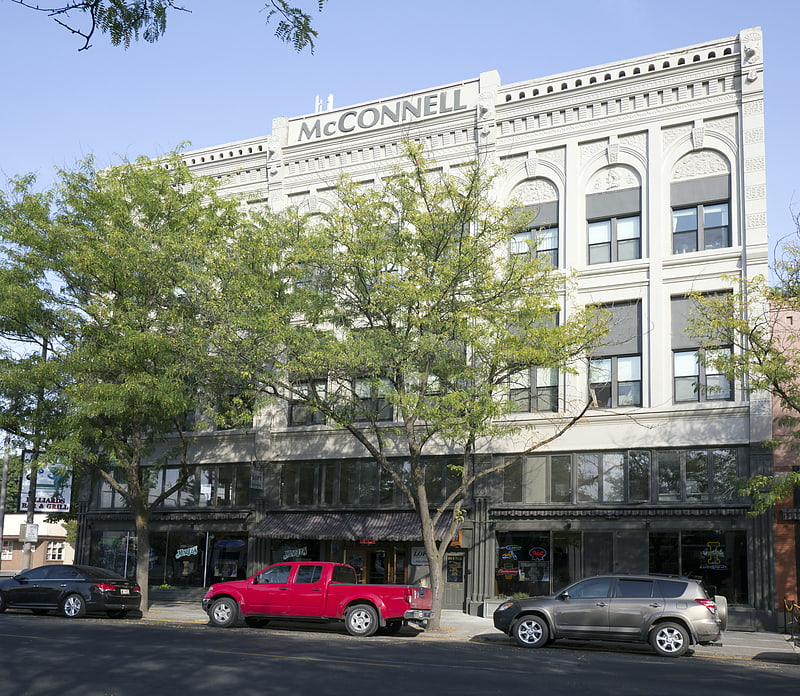
The McConnell–McGuire Building is a historic building in Moscow, Idaho. It was built in 1891 for the McConnell-McGuire department store. One of its founders, William J. McConnell, served as the third governor of Idaho from 1893 to 1897.
The building was designed by architects W. J. Lewis and M. D. Ogilbee. It has been listed on the National Register of Historic Places since February 7, 1978.[8]
Memorial Gymnasium
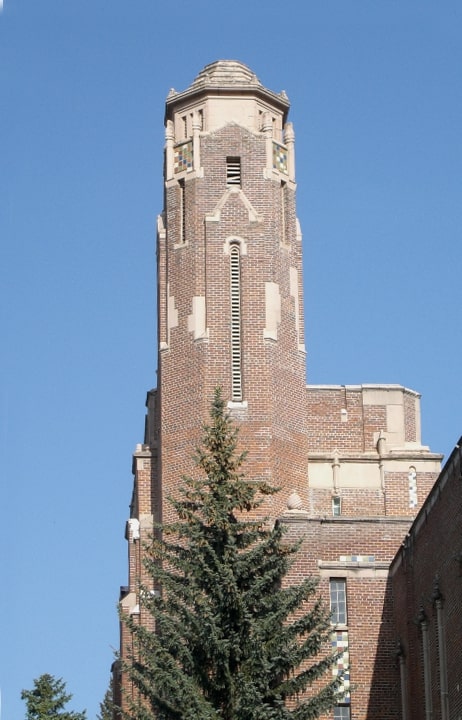
Indoor arena in Moscow, Idaho. War Memorial Gymnasium is a 2,500-seat multi-purpose indoor arena in the northwest United States, on the campus of the University of Idaho in Moscow, Idaho. Opened 94 years ago in November 1928, the venue honors state residents who gave their lives in the service of their country in World War I.
The architectural style is Tudor-Gothic and is heavily buttressed; the chief architect was David C. Lange, the head of the university's architecture department. The west end addition was built from 1951–52, and the building was renovated in 1954. Ivy partially covers the brick and concrete exterior, which is decorated with crouching football player gargoyles and stained glass windows. The elevation at street level is approximately 2,600 feet (790 m) above sea level.
Its predecessor was the original gymnasium (and armory), located directly east; constructed in 1904; it has been reconfigured and continues on campus as the "Art and Architecture South" building. During its time as the varsity basketball venue, it was also a library, with bookshelves along the walls. After the Memorial Gym opened, it became the women's gym.
Memorial Gymnasium was the primary home of Vandal basketball until January 1976, replaced by the newly-enclosed Kibbie Dome; the Dome's basketball configuration was renamed "Cowan Spectrum" in early 2001. Future hall of famer Gus Johnson played for the Vandals during the 1962–63 season, and the "Mem Gym" was frequently sold out, with the attendance estimated at 3,800. During the 1940s and early 1950s, Idaho had a nationally prominent boxing team; over five thousand attended a dual meet against Palouse neighbor Washington State in 1950. It was dropped by the university as an intercollegiate sport in 1954, and discontinued by the NCAA after 1960.
The Memorial Gym is the current home court of Vandal women's volleyball, with a portable Taraflex court since 1999. It occasionally hosts early season basketball games on the hardwood, depending upon the late season football schedule, and the facility is used extensively for physical education classes, intramurals, and open recreation. Commencement ceremonies for the university were traditionally held in the gym from 1929, through 1975. The Kibbie Dome has hosted the primary ceremony for all graduates since 1976, and the Mem Gym is one of several campus venues used for the subsequent individual college ceremonies for the awarding of diplomas.
While the 2020–21 school year was initially expected to be the last for Mem Gym as a varsity athletics venue, following the 2021 completion of the 4,200-seat Idaho Central Credit Union Arena (ICCU Arena), that plan changed. ICCU Arena became the new home of Vandals men's and women's basketball, but volleyball remained in Mem Gym.
At just 49 years of age, it was added to the National Register of Historic Places in 1977. The narrow swimming pool in the basement of the Mem Gym was retired in 1970, when the new swim center opened. The Kibbie Dome lacked locker rooms for its first seven years, so the Vandals and visiting teams continued to dress in the Memorial Gym. The completion of the East End Addition in the fall of 1982 ended the long trek, frequently in rain or snow during basketball season.[9]